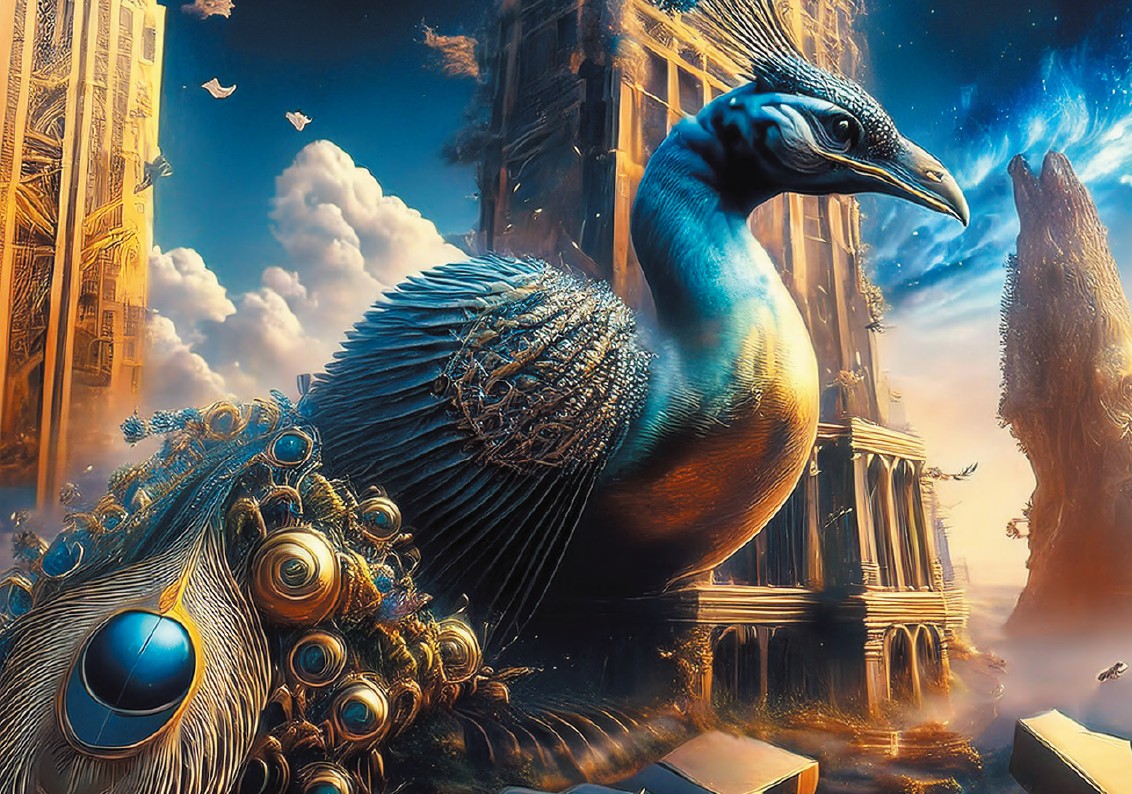
MERZBOW
『Mimesis』
¥3,300(with tax)
SDRSW-148
Release date:Jun 20, 2025
Amazon https://amzn.to/3S7JTAP
CD + Art Book
(80 pages, full color, with 189 AI-generated images included)
Hardcover edition 153× 216 mm
<Release Information>
This work consists of sound and a collection of AI-generated images. The image collection compiles the AI-generated images used for projection during the Merzbow Free Noise concert held at WWW in Shibuya, Tokyo on January 6, 2025. The use of such visuals is rare for Merzbow in recent years, and the use of AI-generated images in a live performance is a first attempt.
The concert was structured in two parts, and one of the rehearsal recordings of a track performed in the first part is the first track on the
CD, “Peacock Analogy.” It features a live mix of computer sounds recorded on CD with Sonicware’s Texture Lab, Oscillator etc. The
second track, “Tenbyo Caterpillar 1,” is one of Merzbow’s most recent studio recordings. It overdubs multiple layers of noise electronics,
computers, and more.
“Peacock Analogy”
The title “Peacock Analogy” is based on the fact that when a peacock painting was used as a reference image to generate a dilapidated cityscape, buildings and metal structures in the shape of peacocks were created. This phenomenon seems to have occurred due to a combination of several factors in AI image generation. From the peacock image, the AI learned the peacock’s unique shapes (e.g., the spread of its feathers, the shape of its neck, the overall silhouette, etc.). When generating the cityscape, the AI may have attempted to apply the learned peacock shape patterns to the city’s buildings and metal structures. In this case, because the prompts were vague expressions such as “dilapidated city” and “metal structures,” the AI was likely strongly influenced by the reference image of the peacock.
“Analogy” is the process by which AI recognizes similarities between different concepts and transfers patterns from one concept to another. In this case, the AI may have recognized similarities between the shapes of peacocks and the shapes of buildings and metal structures and applied the peacock shapes to the buildings and metal structures. In this way, AI image generation can produce unexpected results.
“Mimesis”
Mimesis is an art theory proposed by the ancient Greek philosophers Plato and Aristotle, the concept that works of art imitate the real world or nature. Traditional art has emphasized faithfully reproducing reality or expressing an idealized reality. AI art generates images by learning from vast amounts of image data and recognizing patterns within it. In this point, AI can be seen as “imitating” existing images.
Furthermore, mimesis in AI art can be considered part of a creative process. By generating new images based on learned data, AI can expand human creativity and open up possibilities for new artistic expressions.
“Imitation” also carries negative connotations such as “copycat” or “fake” Because AI learns from existing data to generate images, there are various opinions, such as that its originality is low, or that because AI can generate a large number of images in a short time, its scarcity is low, or that because AI has no emotions, its artistry is low.
Is AI art like mass-produced “junk art”? Is AI art something that “resembles art but is not”?
Discussions continue on how AI art will change the traditional concept of art, how it will expand human creativity, and whether AI-generated images are art in the first place, who the creator is, and where the copyright lies.
MASAMI AKITA
*A Part of Text by AI-assisted with Gemini (Google).
Track list
01. Peacock Analogy
02. Tenbyo Caterpillar 1
